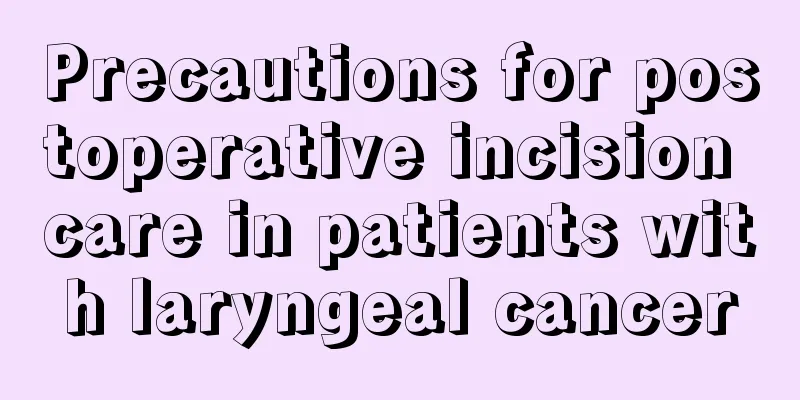Does renal hamartoma need treatment? What should I do if I have left abdominal pain?

|
Whether a renal hamartoma requires treatment depends on its size, symptoms, and growth, and left-sided abdominal pain may be caused by the hamartoma compressing surrounding tissues or other reasons. If the tumor is small and has no obvious symptoms, it can be observed regularly; however, if pain, bleeding, or the tumor is large, active intervention is usually required. Renal hamartoma is a common benign solid tumor, and its formation is often related to gene mutations, genetic factors, and certain diseases (such as tuberous sclerosis). Hamartomas that are smaller than 4 cm and asymptomatic generally do not require treatment, and only require regular B-ultrasound or CT to monitor the size and growth trend of the tumor. However, when the hamartoma continues to grow, compresses surrounding organs and causes pain, and is accompanied by hypertension, hematuria, etc., medication or surgical treatment is required. Drug treatment is mostly based on mTOR inhibitors, which can effectively delay tumor growth; for localized tumors, minimally invasive ablation can be selected, such as radiofrequency ablation or cryoablation; when the tumor is large or the risk of bleeding is high, partial nephrectomy is required. Left abdominal pain may also be affected by factors such as diet, inflammation, or urinary tract infection, so the cause needs to be clarified and treated systematically. Renal hamartoma is a common benign solid tumor, and its formation is often related to gene mutations, genetic factors, and certain diseases (such as tuberous sclerosis). Hamartomas that are smaller than 4 cm and asymptomatic generally do not require treatment, and only require regular B-ultrasound or CT to monitor the size and growth trend of the tumor. However, when the hamartoma continues to grow, compresses surrounding organs and causes pain, and is accompanied by hypertension, hematuria, etc., medication or surgical treatment is required. Drug treatment is mostly based on mTOR inhibitors, which can effectively delay tumor growth; for localized tumors, minimally invasive ablation can be selected, such as radiofrequency ablation or cryoablation; when the tumor is large or the risk of bleeding is high, partial nephrectomy is required. Left abdominal pain may also be affected by factors such as diet, inflammation, or urinary tract infection, so the cause needs to be clarified and treated systematically. Patients are advised to seek medical attention immediately if they experience persistent abdominal pain or obvious discomfort, and to use imaging examinations to determine the cause, especially to pay attention to whether there are symptoms such as hematuria and fever. In daily life, avoid excessive fatigue, have a regular work and rest schedule, exercise appropriately, eat a light diet, and supplement with antioxidant ingredients such as vegetables and fruits. At the same time, monitor the development of the tumor as prescribed by the doctor to avoid delaying treatment. For patients who have chosen medication or surgical intervention, regular follow-up management is required after surgery to prevent recurrence or other complications. |
<<: Will liver cancer occur if liver function is abnormal?
>>: Will a father's lung cancer be passed on to his daughter?
Recommend
What are the symptoms of chronic atrophic gastritis
If gastritis occurs, there is usually upper abdom...
What are the dangers of mobile phones? If you love playing with your mobile phone, you must know this!
With the development of modern electronic technol...
.Where is the liver in the human body?
The liver is an important part of the human body....
Redness in the facial triangle area
There is an area on the human face called the tri...
Is congenital enzyme deficiency hereditary?
Enzymes are needed to carry out activities and pa...
What to do if straw mushrooms taste bitter
Straw mushrooms are also a kind of fungus. They h...
What are the specific manifestations of the early symptoms of lung cancer? 6 early symptoms of lung cancer
What are the early symptoms of lung cancer? What ...
Vaginal bleeding after the IV drip
Vaginal bleeding after an IV drip may be related ...
How to prevent liver cancer metastasis? This can prevent liver cancer metastasis
Cancer itself is difficult to treat, especially l...
Can you drink freshly squeezed milk?
Many rural families have cows at home. Some wealt...
Why does lung cancer cause bone metastasis? How to treat lung cancer bone metastasis
Why does lung cancer cause bone metastasis? How s...
Women with cervical cancer usually have itching in three places
Female cervical cancer is a serious malignant tum...
What are the characteristics of medullary thyroid cancer by color Doppler ultrasound? What are the types of medullary thyroid cancer?
Medullary thyroid cancer is a disease that troubl...
What are the precautions for preventing liver cancer? Three precautions for preventing liver cancer
What are the precautions for preventing liver can...
Can I eat while having an ultrasound?
People should not eat anything before doing an ul...









